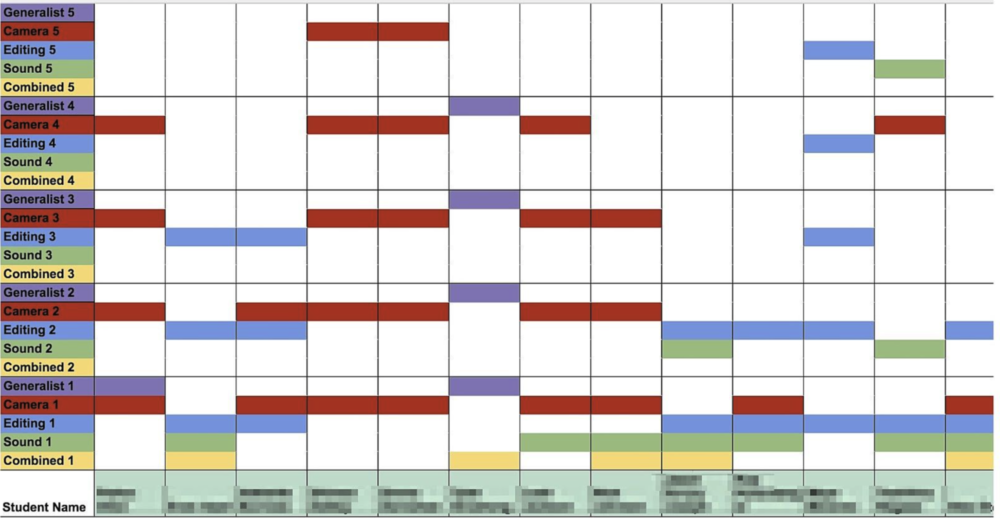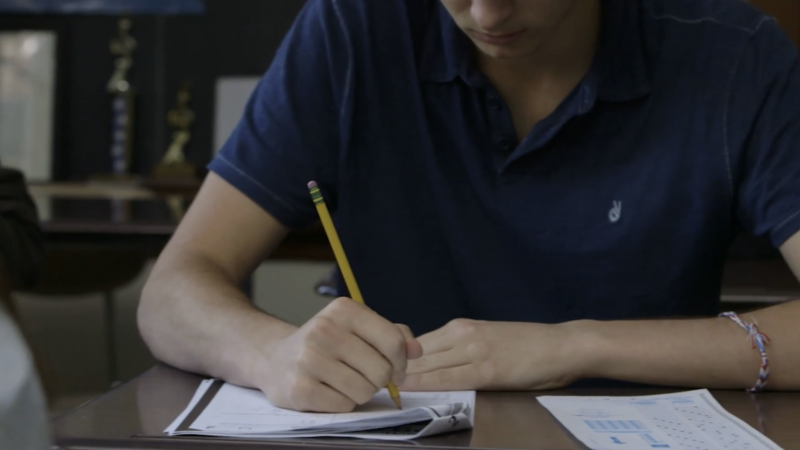Learning Loss: Why We Need Competency-Based Learning Now More Than Ever
Much has been written in recent months about the COVID-19 pandemic’s impact on student academic achievement. Learning loss, the loss of knowledge or skills that results from gaps or disruptions in a student’s education, is one metric that is raising some alarms. Schools, families, pundits, journalists, and politicians often cite learning loss as justification for keeping schools open, even during surges in COVID-19 cases.
However, there are some complications that emerge in using learning loss as a metric. Much of the data comes from state standardized tests, which were already heavily criticized pre-pandemic for the types of learning they were measuring (or not) and their challenges with accuracy, integrity, and equity. Even NWEA acknowledged that there were concerns that their 2020-21 test data wasn’t reflective of all of the students that they serve.
There’s also a question about the usefulness of the term learning loss. Can you really lose something you never had? Ron Berger recently wrote an indictment of the term in The Atlantic where he warns that defining students by their deficits is unmotivating, demoralizing and may ultimately hold students back from making academic gains. Students’ self-perception about their ability to learn and social-emotional well-being play a profound role in how they learn, and the learning loss narrative itself may be counterproductive.
Despite some questions regarding the fidelity of our tools for assessing learning loss and the usefulness of the term writ large, evidence does suggest that the pandemic has impacted student learning. Interestingly, NWEA’s key findings indicate that students across most grades (3-8) made reading and math gains in 2020-21; however, students made gains during 2020-21 at a lower rate compared to pre-pandemic levels. Additionally, academic achievement was lower for all groups in 2020-21, with historically marginalized groups being disproportionately affected.
However, NWEA’s call to action is very clear: “We cannot return to the classroom and do things the same as they have always been done and expect to see a different outcome. Instead, we must use this critical moment in education to radically rethink how programs, policies, and opportunities are designed and fiercely commit to prioritizing the communities most impacted by the pandemic and distributing resources accordingly.”
Keeping schools open alone is insufficient to close the gap. We have to reimagine our systems and structures for learning. We need competency-based learning now more than ever.
Why?
Competency-based learning is a system that aims to mirror how people learn, work, and succeed in the world. One of the core aims of competency-based learning is promoting equity, where ALL students are known deeply, empowered to learn, and provided the support they need to meet high expectations. Central to this goal of equity are these three elements of CBL environments defined by the Aurora Institute:
Students progress based on evidence of mastery, not seat time.
Students receive timely, differentiated support based on their individual learning needs.
Students learn actively using different pathways and varied pacing.
What this means is that under a competency-based learning environment, it’s not just about moving students along or allowing students to get by. It’s about ensuring that all students are walking away with the essential skills they need to thrive inside and outside of the classroom. To paraphrase Sal Khan’s Let’s Teach Mastery, Not Test Scores Ted Talk, instead of artificially constraining the time it takes for a student to learn, ensuring a variable outcome in terms of learning, CBL does the opposite: it ensures that every student is becoming proficient, while allowing the time it takes for students to learn to be variable.
TED Talk: Let’s Teach for Mastery — Not Test Scores
Sal Khan, educator and founder of Khan Academy
A competency-based approach to learning can serve as a powerful way for schools to address the gaps that may have arisen as a result of the impact of COVID-19. Since CBL raises the floor–expecting all students to demonstrate proficiency in core skills regardless of the time it takes–while prioritizing equity in providing students with timely, differentiated support, schools will be better positioned to fulfill their mission as learning organizations.
The impact that CBL can have on a school community isn’t purely academic. CBL has some profound implications for supporting students’ social-emotional learning and wellness. We know that the COVID-19 pandemic hasn’t just had an adverse impact on academic gains; the isolation and dislocation have taken a toll on our students. CBL, in prioritizing that each student be known deeply and provided the support they need to succeed, centers cultivating belonging through relational, connected learning and promoting a growth mindset.
However, in order for competency-based learning to take root and start mitigating some of the adverse impacts of the pandemic on academic achievement and social-emotional well-being, schools need to prioritize the following two shifts:
1. From Content-Driven to Skills-Driven
If we’re really being honest, “learning loss” isn’t anything new. Schools were reckoning with it pre-pandemic, especially when it came to the loss that happened over summer vacations and longer recesses. We have to look no further than the famous study conducted by Lawrenceville Academy in which students were asked to retake their science final exams just three months after completing their courses. The average grade of those finals fell from a B+ to an F. By the way, this study was conducted well before the onset of the pandemic.
Most Likely to Succeed: What Does It Mean to Learn?
Retention — a study conducted by Lawrenceville Academy
As teachers and school leaders, we need to give ourselves permission to do more with less content. It never was, and it certainly will never be, enough to just cover content. Students need time and space to do something with the content they learn as a way to develop the self-efficacy and confidence they need to be lifelong learners. We need to reprioritize so that we’re covering a little less content in order to make time to support equipping our students with the skills they need to deeply engage with, apply, and transfer their learning. As Grant Wiggins wrote back in 1989 in The Futility of Trying to Teach Everything of Importance, “Students cannot possibly learn everything of value by the time they leave school, but we can instill in them the desire to keep questioning throughout their lives.”
A competency-based approach to learning hinges on identifying skills-based competencies or learning outcomes, essential skills that students need to thrive both inside and outside of the classroom. Schools must start by articulating what they want their graduates to know and be able to do and using those answers to inform and prioritize what kind of learning experiences matter. This can include developing SEL competencies. These competencies and learning outcomes become the signal in the noise, the organizing principles of our classrooms.
To learn more about concrete steps in making the transition from content-driven to skills-driven, check out the following resources from GOA:
2. From Time-Based to Performance-Based

A skill tree progress chart from a GOA filmmaking course is used as a transparent tool for growth and learning, empowering students to be aware of where everyone is in their learning.
As educators, we have two major blindspots we need to account for when it comes to student learning. The first is the fact that while we, as teachers, might be revisiting the same content and skills year after year as we teach, for our students it’s often the first time they’re encountering the concepts and skills in our courses. They’re going through school for the first time.
The second is the fact that learning isn’t linear, but rather jagged and recursive, which isn’t always how we design curriculum. We’re often trying to follow curriculum maps and pacing guides that are meant to move all students in lockstep in an orderly fashion from point A to B. However, the challenge that comes into play is that human beings learn at different rates and when mitigating events occur, ranging from pandemics to weather-related incidents to absences, the lack of breathing room in the curriculum doesn’t offer flexibility and ultimately leaves students behind. This punishing pace not only has implications for student academic performance, but also for their mental health and well-being.
Knowing what cognitive science tells us about learning, we need to create more time for student practice, reflection, and opportunities for reassessment. We have to move away from a model of a one-and-done curriculum and high-stakes summative assessments to one where we’re providing ample opportunity for students to practice core skills intentionally and repeatedly over time. We need to make sure we’re not penalizing students for making mistakes and learning from them, but rather supporting and celebrating their growth and learning.
To learn more about concrete steps in making the transition from time-based to performance-based, check out the following resources from GOA:
Making the Shift from Time to Performance: Three Priorities for Student-Centered Learning
How to Design for Learning: Four Approaches to Nonlinear Curriculum
Schools can no longer afford to try to return “back to normal.” The cost is not only the academic well-being of our students, but also their social-emotional well-being. Competency-based learning offers the best path forward in ensuring that we’re meeting the needs of all of our students.
GOA serves students, teachers, and leaders and is comprised of member schools from around the world, including independent, international, charter, and public schools. Learn more about Becoming a Member. Our professional learning opportunities are open to any educator or school team. Follow us on LinkedIn and Twitter. To stay up to date on GOA learning opportunities, sign up for our newsletter.


